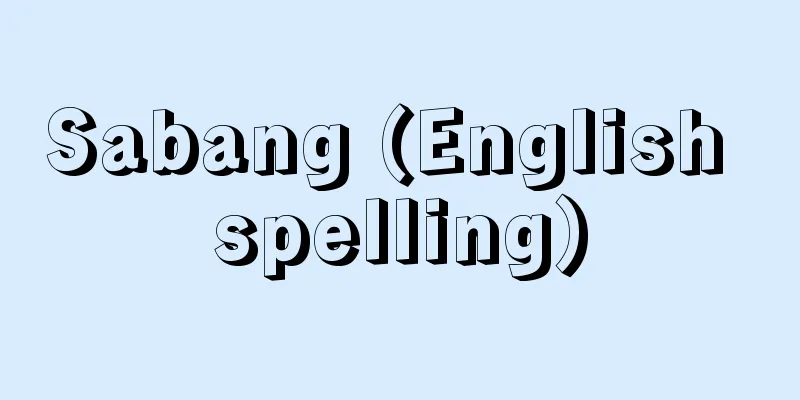dvija

|
...The term took on the meaning of "status" and "class," and even after intermarriage and skin color ceased to be a sign of status, the term continued to be used to mean "status" and "class." The top three of the four varnas were called the "dvija" (rebirth class), and boys who belonged to this class were initiated (upanayana (second birth)) at around the age of 10 and were given the right to participate in Vedic rituals as members of Aryan society. In contrast, the Shudras were considered to be "ekaja" (lifelong class) who could not be initiated, and suffered various religious, social, and economic discrimination from the "dvija" (rebirth class). From [Shudra]...In the late Vedic period, when the Varna system was established, the Shudras were mainly indigenous people who came under the rule of the Aryans who had advanced into the upper reaches of the Ganges River. They were called Ekaja (people of the first generation) and were excluded from the Vedic religion led by the Brahmins, and were discriminated against in all aspects of social life by the three higher Varnas (Dvija (people of the second generation), Aryas) of Brahmins, Kshatriyas, and Vaishyas. According to the Hindu Code, the duty of the Shudras was to serve the three higher Varnas as slave laborers or artisans. From [Varna]…(4) Shudra: Serving the three higher varnas through slave labor and handicrafts. The three higher varnas are called the reborn tribe (dvija), and share three common duties: performing rituals for themselves, studying the Vedic scriptures, and giving alms. Boys belonging to the reborn tribe have upanayana (initiation, second birth) around the age of ten, and are given the right to participate in Vedic rituals as members of Aryan society. … *Some of the terminology that mentions "dvija" is listed below. Source | Heibonsha World Encyclopedia 2nd Edition | Information |
|
…この語に〈身分〉〈階級〉の意味が加わり,混血が進み肌の色が身分を示す標識でなくなったあとにおいても,この語は依然として〈身分〉〈階級〉の意味に使われ続けたのである。4バルナのうち上位の3バルナは再生族(ドビジャdvija)と呼ばれ,これに属する男子は10歳前後に入門式(ウパナヤナupanayana(2度目の誕生))を挙げ,アーリヤ社会の一員としてベーダの祭式に参加する資格が与えられる。これに対しシュードラは入門式を挙げることのできない一生族(エーカジャekaja)とされ,再生族から宗教上,社会上,経済上のさまざまな差別を受けた。… 【シュードラ】より…バルナ制度が成立した後期ベーダ時代にシュードラとして位置づけられたのは,主としてガンガー(ガンジス川)上流域に進出したアーリヤ人の支配下に入った先住民であった。彼らはエーカジャekaja(一生族)と呼ばれてバラモンの指導するベーダの宗教から除外され,バラモン,クシャトリヤ,バイシャの上位3バルナ(ドゥビジャdvija(再生族),アーリヤ)から社会生活のあらゆる面で差別を受けた。ヒンドゥー法典の定めるところによると,シュードラの義務は隷属的労働者や職人として上位3バルナに奉仕することであるという。… 【バルナ】より…(4)シュードラ 隷属的労働や手工芸による上位3バルナへの奉仕。以上の4バルナのうち上位3バルナは再生族(ドゥビジャdvija)と称され,自分のための祭式挙行,ベーダ聖典の学習,布施の三つを共通の義務としている。再生族に属する男子は10歳前後にウパナヤナupanayana(入門式,2度目の誕生)をあげ,アーリヤ社会の一員としてベーダの祭式に参加する資格が与えられる。… ※「dvija」について言及している用語解説の一部を掲載しています。 出典|株式会社平凡社世界大百科事典 第2版について | 情報 |
Recommend
Eckener, H. - Eckener
…In May 1926, he successfully flew across the Nor...
Ring (English spelling) Ling, Pehr Henrik
Born: November 15, 1776. Clooneuberg Died: May 3, ...
Togan (English spelling)
Born: 1891. Bashkurdistan [Died] July 1970. Turkis...
Zantedeschia albomaculata (English spelling)
… [Takabayashi Masatoshi]. … *Some of the termino...
Range
…The zoning law establishes about 32 principal me...
Meiji Jingu Tournament
A national athletics tournament held annually or e...
Lucretia - Lucretia (English spelling)
A legendary chaste woman from ancient Rome who is ...
Magwe [District] (English spelling)
One of Myanmar's seven divisions. Located in t...
Seven Kilns of Enshu
Seven kilns that are said to have been supervised...
Innocentius XI
1611‐89 Pope of the Roman Empire. Reigned 1676-89....
Ablation method
...On the other hand, the speed at which a spacec...
Battle of Boing - Battle of Boing
In July 1690, the British Protestant King William ...
Wolzogen, H. von (English spelling) WolzogenHvon
...translate as indicator motive. The term was pr...
Gold miner - Kanayamashi
...A mining operator who was born from the end of...
Sodium cyclamate
…Sodium cyclohexylsulfamate (also called sodium c...









